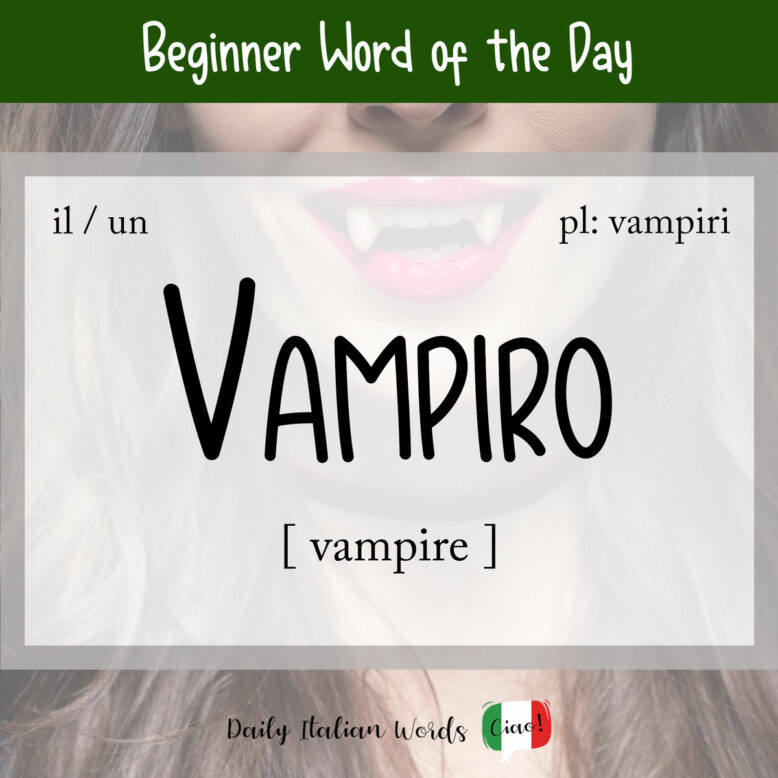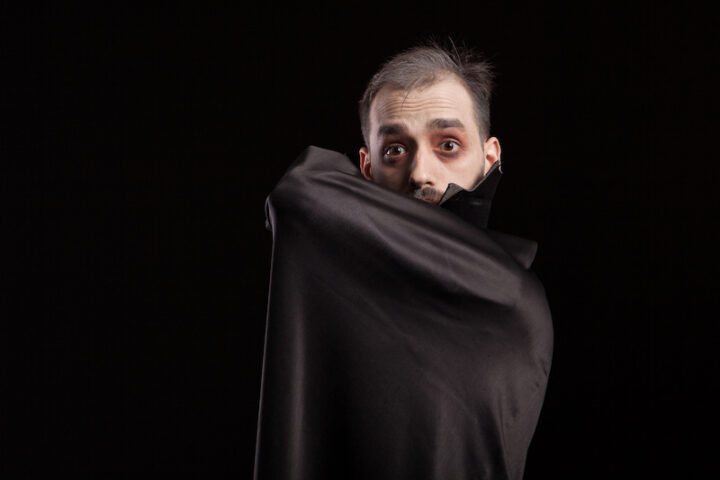Today’s ‘word of the day’ is part of our Italian Halloween Word series. On the days leading up to Halloween, we’ll post a word that is related to this spooky time of year. Enjoy! 🦇
The word in Italian for that demonic character that drinks the blood of the living by biting their necks is vampiro (masculine, plural: vampiri). Like the English equivalent vampire, it entered the language via French from the Hungarian vampir.

Perhaps the most famous vampiro of all time is Count Dracula (known as Conte Dracula in Italian). First introduced in the novel Dracula by Bram Stoker in 1897, this infamous character has been assigned to numerous literary genres and has spawned various film, theatrical and television interpretations over the years.

Some important vocabulary associated with vampires include:
- zanna = fang
- mantello = cape
- sangue = blood
- non morto / morto vivente = undead
- bara = coffin
Il vampiro dorme durante il giorno e si sveglia dopo il calar del sole.
The vampire sleeps during the day and wakes up after the sun sets.
In a figurative sense, vampiro can also refer to a greedy and ruthless speculator, exploiter or usurer in the world of finance. A donna vampiro (literally vampire woman), on the other hand, is a seductive woman who uses her sexual attractiveness to exploit men.
We’ve all heard of the vampire bat (pipistrello vampiro), renowned for its exclusive diet of blood, but did you know that there are three different species? They are as follows:
- vampiro vero di Azara = common vampire bat
- vampiro dell’Amazzonia = white-winged vampire bat
- vampiro senza coda = hairy-legged vampire bat
False vampire bats, such as the vampiro spettro (spectral bat), were originally thought to feed on blood, but are now known to be carnivorous, preying mainly on other bats, lizards, and mice.
Heather Broster is a graduate with honours in linguistics from the University of Western Ontario. She is an aspiring polyglot, proficient in English and Italian, as well as Japanese, Welsh, and French to varying degrees of fluency. Originally from Toronto, Heather has resided in various countries, notably Italy for a period of six years. Her primary focus lies in the fields of language acquisition, education, and bilingual instruction.


